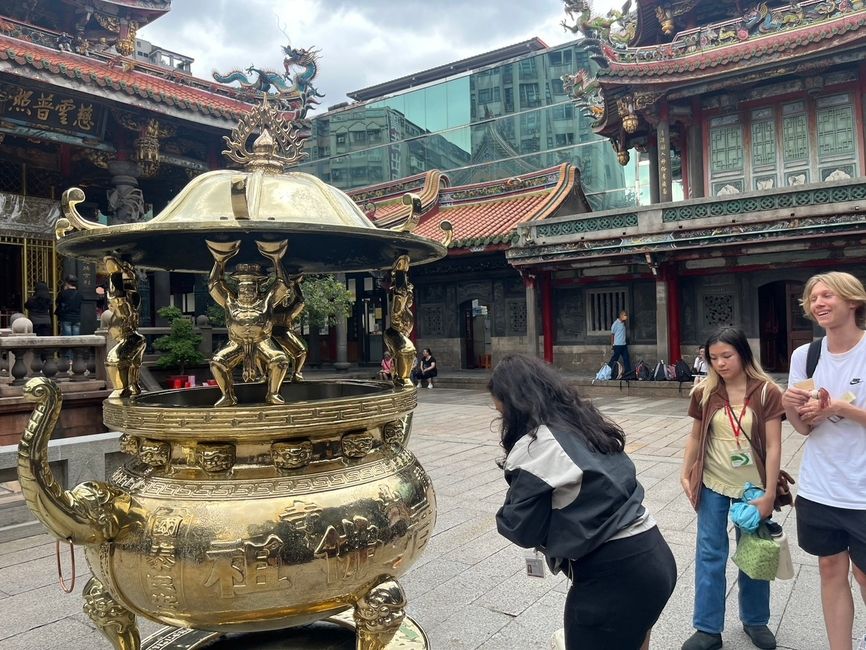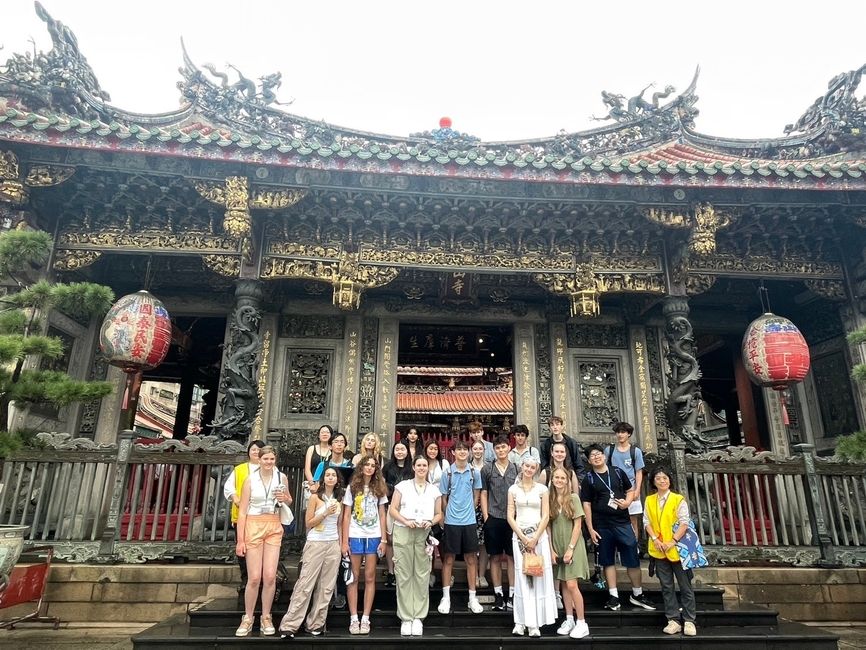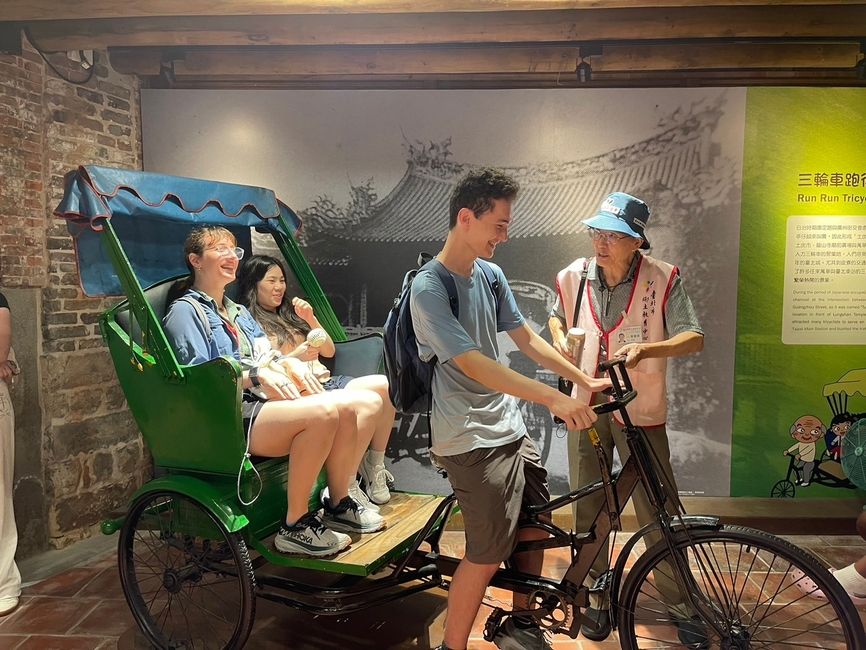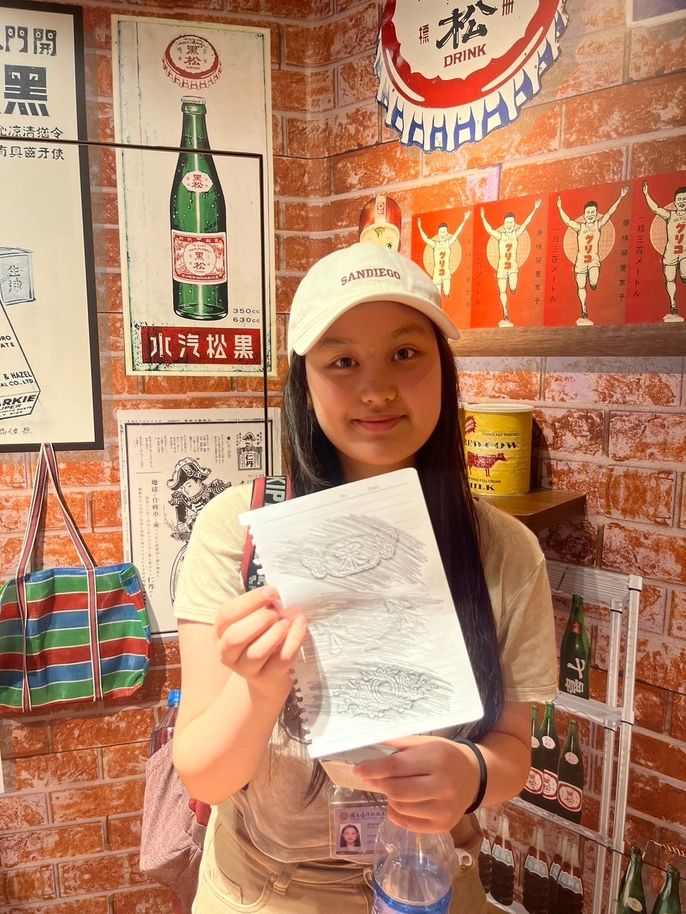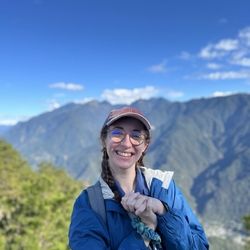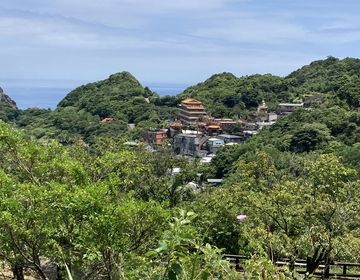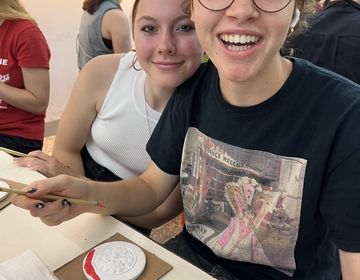Peering into the Past: Longshan Temple and Bopiliao Historical Block
This week we brought students to one of my favorite places in all of Taipei, Longshan Temple and Bopiliao Historical Block. Around 200 years ago Taipei 101 was not this city's central hub, but rather it was this now seemingly quaint neighborhood. Can you imagine a bustling place full of people going to drink tea as they listen to the radio or pray at the temple for an upcoming exam?
At Longshan Temple, we saw local people continuing this ancient tradition of praying, offering sacrifices, and practicing divination by throwing two crescent-shaped wooden blocks on the ground. "Long" 龍, meaning dragon, and "shan" 山 meaning mountain, was built in 1738 and has gone through a few renovations over the years due to natural disasters. This beautiful place is considered the oldest and most famous temple in Taipei. Students met a local volunteer tour guide who thoughtfully explained the intricate and meaningful design of the temple. Every Buddhist temple in Taiwan follows a similar general design, such as a south-facing gate to allow for the most possible daylight. Longshan is special with its dragon columns and a splendid waterfall you see on either side as soon as you enter the main gate - all adding to the fengshui 风水! The guide explained how you must enter through the right gate and exit through the right, or else it is bad luck! When students looked towards the right gate, they noticed it featured dragon artwork and the left gate had tiger artwork.
Once we entered the central courtyard, we saw a large brass incense burner. The guide described how the temple has worked hard to eliminate the burning of incense to lessen harmful environmental impacts. Even so, you can still see many locals and tourists alike going to bless an item by moving it around the incense burner clockwise three times or stepping up to it to pray. Many of our students were eager to do the same! The central building in the temple is dedicated solely to Guanyin, the bodhisattva of compassion and mercy. Everywhere we looked, there were offerings on the tables, bright pink orchids, and large colorful lamps adorning the halls. Guanyin is not the only god worshipped, in true Taiwanese fashion, there are many other deities worshipped in the rear and sides of the temple hallways. Another well-known diety would be Matsu, goddess of the sea, who is enshrined in the back. On the far right is the god of literature, which Taiwanese people often seek out during exams. Lastly, many students wanted to know about the god of match-making, known as " the Old Man Under the Moon", 月老 , who ties the fate of two people together with a red string. Before we left, students had the chance to practice divination themselves and observe devoted locals at the temple.
Next, we walked away from the colorful patterns of the temple towards the historic block nearby called Bopiliao. Luckily, there was another wonderful and humorous volunteer tour guide who brought us in and introduced how Taipei began hundreds of years ago. He began by standing in a replica of a large Tangshan sailing boat and shaking it to help our students understand how the currents of the wide rivers could feel. Students took turns doing the same! The origins of this historical district are closely tied to the Tamsui River, which helped the entire Taipei region prosper. Across the way, we saw a school built in 1907. Based on an old black and white photo, students enjoyed guessing how many students used to attend. It once had over 7,000 students!
As the guide led us through this heritage and cultural site, students had the chance to interact with many different exhibits. From looking at building materials from the colonial Japanese period to attempting (and succeeding) to rebuild their own 18th-century traditional building. During this time, homes and shops were all built with outdoor hallways - which you can see echoed in most of the modern buildings in Taipei! Students seemed very curious as to why. The guide pointed out that these hallways help protect people from sunshine and rain, which is very common in Taiwan. In the past, these streets and alleyways were home to many teahouses that sold snacks and provided a place for many elderly, laborers, and vendors to rest.
We thanked the cheerful volunteer guide and took a group photo, concluding yet another meaningful cultural activity. Through going here, students gained a deeper understanding of how the people of Taiwan continue to practice ancient traditions and how the echoes of the past have ways of persisting. The sounds of modern-day people in cars and on scooters filled the air of this historically significant neighborhood as students walked back to the MRT station and imagined what people here were up to 200 years ago.
Related Posts
How I Studied Abroad as a Freshman in High School
Thinking about what to do the summer after your freshman year? Check out how one of our alumni studied abroad in Taipei, Taiwan at such a young age and how you can too!
Exploring the Rich Culture of Tainan: An American Students' Journey
In a rapidly globalizing world, experiencing diverse cultures has become an essential part of education. For a group of American students, a two-day and one-night trip to Tainan, Taiwan, offered... keep reading
Learning Made Sweet and Fun: Baking the Famous Pineapple Cake
This afternoon's cultural activity was one of my favorites! We enjoyed a refreshing break from the heat, learning how to bake pineapple cake. The students had a blast baking and... keep reading

